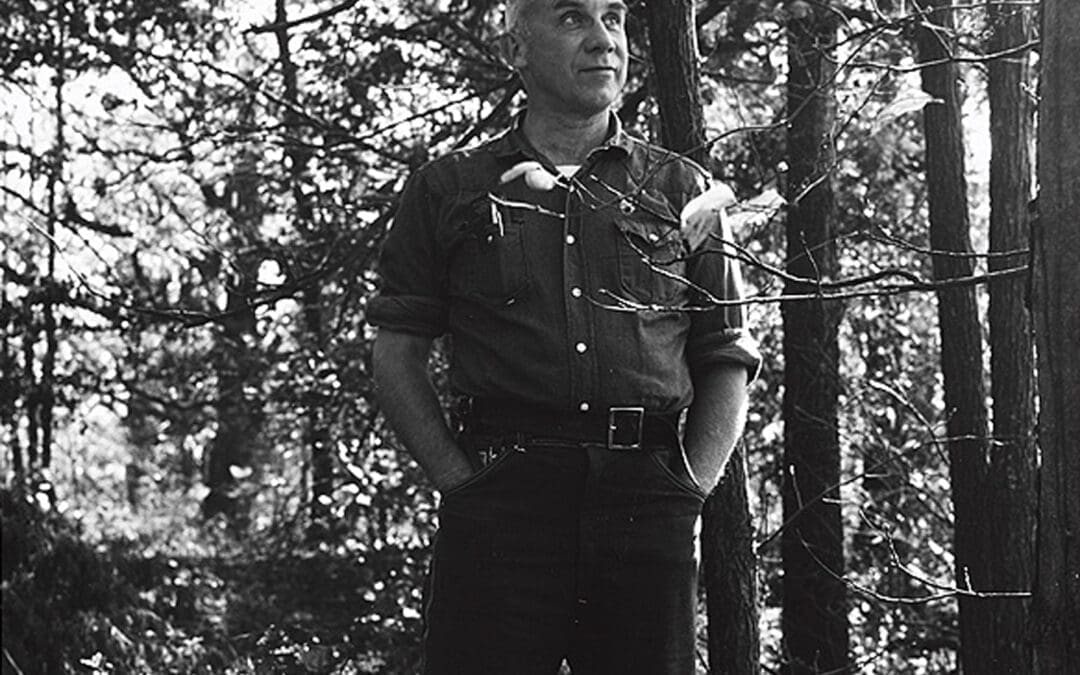Adam Daifallah and Tasha Kheiriddin, Rescuing Canada’s Right: Blueprint for a Conservative Revolution. Mississauga, Ontario: Wiley, 2005. With a Foreword by Mark Steyn. 281 pp. C$26.99/ US$18.95.
On the morning after the Canadian federal election campaigns of 1997, 2000, and 2004, and leadership campaigns federally and provincially in 2000, 2002, and 2004, like many other “small-c conservatives” in my country, I wondered what it would take for the small-c conservative party or candidate to win power. I’ve also been on the winning side: at the federal riding level in 1993, provincially in 1995 and 1999, and in two federal leadership campaigns with the present Leader of the Opposition. But electoral success for Canadian conservatives seems by and large like a Sisyphean task punctuated by brief periods in power seeking to address “the fiscal mess left by the other guys.” Canada’s conservatives have exercised power for the approximate equivalent of forty-eight years of the slightly more than 138 years since the Canadian confederation was created by proclamation of a British Act of Parliament, July 1st 1867. By comparison, the Liberal Party of Canada has governed for about the equivalent of ninety years since Confederation. In the 20th century, the Liberals were in power for about sixty-five years making it among the world’s most electorally successful political parties, rivalled only by Mexico’s PRI or the former USSR’s Communist Party.
This is the problem Tasha Kheiriddin and Adam Daifallah attempt to address in their book: How can Canada’s conservatives achieve electoral success and exercise power for the longer term? (Full disclosure: as one might guess, by virtue of our common political circles, I am acquainted with both authors). Kheiriddin and Daifallah frame the problem, firstly, in terms of conservatives’ failures at the polls, and then they take it further. They point to the failure of conservatives to formulate a guiding philosophy that could inform coherent policy, they point to the failure to create infrastructure, and to a failure of leadership. The exemplar to which they seem to look is the remarkable electoral success of American movement conservatism since the election of Ronald Reagan in 1980. But the conservatism that Kheiriddin and Daifallah advocate is an American neoconservative hybrid. The conservatism promoted in Rescuing Canada’s Right is a conservatism that styles itself “fiscally conservative” but “socially liberal.” Or, as an Ontario conservative and adviser to former Ontario PC Premier Mike Harris, Greg Lyle, put it in a recent panel discussion about Canadian conservatives on iChannel, 21st-century, Canadian conservatives should “get government out of the bedroom and the boardroom.” In their insistence on a conservatism that fulfills the name fiscally but refuses it on social policy, the authors diverge from the traditionalist conservatism of South African-born Canadian Mark Steyn who wrote the foreword to their book.
And it is not just from Mark Steyn’s traditionalism that Kheiriddin and Daifallah diverge.
Despite the title, in their Why Reagan Won?: The Conservative Movement 1964-1981 Clifton White and William Gill trace American movement conservatism from Friedrich von Hayek’s The Road to Serfdom (1943), Richard Weaver’s Ideas Have Consequences (1948), William F. Buckley’s God and Man at Yale (1951), and Russell Kirk’s The Conservative Mind (1953). These they consider the seminal works that framed and gave American movement conservatism its intellectual coherence. White and Gill point to the nomination of U.S. Senator Barry Goldwater of Arizona as the Republican Party’s presidential candidate in 1964 as the seminal political event for American movement conservatism that laid the groundwork for Ronald Reagan’s winning the presidency twenty years later. Gill and White also identify what they consider the seminal principles that informed American movement conservatism at least through Mr. Reagan’s presidency:
- that belief in God is necessary to freedom and to a proper respect for our fellow man;
- that totalitarianism, under whatever guise, must be resisted with all our strength; and
- that the federal government interferes coercively in our everyday lives through oppressive taxes, restrictive regulations, and an increasing tendency of federal courts to dictate laws to states and communities (Why Reagan Won, 30).
To be sure, Ms. Kheiriddin and Mr. Daifallah understand that populism or hyper-individualism is not up to the job of achieving electoral success. They understand the power of institutions: the power of institutions of news reporting to shape public debate, the power of think tanks to frame and set the terms of the debate, of the courts, of associations like campus or 4-H clubs, of a political culture, of traditional, ethnic communities, and of the power of political institutions to develop leaders and bring organizational cohesion to isolated individuals to create a movement (254-255).
They advocate what they style as pro-family and pro-marriage policies, the creation of a parallel private health care system, and free market environmentalism (256). But their emphases seem informed by Mr. Lyle’s maxim of getting government out of the bedroom and boardroom and by free market individualism instead of an approach that would strengthen or create the institutions of family and marriage, the institutions of health care, or institutions for promoting good land stewardship. The exception to this is their call for a constitutionalism that recognizes the dispersal of state powers among the provincial and federal governments. Despite their looking to the U.S., Kheiriddin and Daifallah leave out what Gill and White consider the most important of American movement conservatism’s seminal principles: “that belief in God is necessary to freedom and to a proper respect for our fellow man.” And they seem to give little consideration to the second principle (which figures prominently in the writings of Mr. Steyn): “that totalitarianism, under whatever guise, must be resisted with all our strength.”
So, how can Canadians of a certain cast of mind lay the groundwork for a conservative movement in Canada? In my piece, “What is to be done . . . in politics?” I suggested some things I think are germane to this question as well. I also suggest that conservatives should frame their activism as follows:
- By preferring cultural influence over – but not to the exclusion of – power. As James Davison Hunter has pointed out, and as reiterated by Ray Pennings in “What is to be done . . . in the public square?,” American movement conservatism has been a banner success in achieving power. But its ability to win and to wield political power has not translated into influence among the most powerful shapers and keepers of culture in the arts, media, and the university;
- By doing as Tasha Kheiriddin and Adam Daifallah suggest and recognizing institutional power, and by using institutions as the primary means for seeking cultural influence. As Gill and White go to some trouble in pointing out, the power of “think tanks” – institutes for public policy and cultural analysis and research – should not be underestimated (Why Reagan Won?, 55-64). To their credit, Kheiriddin and Daifallah understand this, and go so far as to include a number of think tanks in an appendix (259-266), including the Work Research Foundation. As my colleague Gideon Strauss pointed out to me earlier this week, this was Hayek’s advice in June-July 1945 to Antony Fisher, one of the founders of the UK’s Institute of Economic Affairs: “avoid politics and reach the intellectuals with reasoned argument – it will be their influence which will prevail.” While this under-appreciates the power of the state to shape culture, it is nonetheless worth considering as an antidote to over-emphasizing political power;
- By taking to heart Gill and White’s first principle, above. As Philip Jenkins (see my review, here — scroll down) and, now, so many others have pointed out, religion is far from dead and modern secularism is far from hegemonic, globally. Religion matters. As I’ve suggested in my article linked here, constitutional, representative government is a fruit of Christian political thought. Must constitutional, representative government be confessional? I don’t think so. But it should not be forgotten or dismissed that for some 1500 years, the development of constitutional, representative government was nurtured by Christian political theorizing. Why do we think that constitutional, representative government can get along without the continued nurturing by the tradition that gave it birth, breath, and caused it to flourish?
- By taking to heart Gill and White’s second principle, above, as well. Resisting totalitarianism follows from the first principle, and from our adherence to constitutional, representative government on principle as best contributing to human flourishing. Totalitarianism is, at root, an attempt to exercise absolute sovereignty and control in denial of humankind created in the image of God. It is a denial of humankind’s being intended to exercise stewardship, responsibility, and leadership plurally – in families, in local as well as national political communities, in religious communities, in work, in the formation of culture, and elsewhere. The state nor any one ruler cannot and should not attempt to exercise influence, authority, and power exhaustively. This is a call to resist the totalitarian temptation in all its forms, whether religious or secularist.
The challenge for Canadian, small-‘c’ conservatives amidst a liberal hegemony can seem hopeless or, at best, daunting. Understandably so, many turn away in disgust from national politics and the broader culture, and turn inward to family, to church and other religious communities, and to local concerns. However, at the head of the concluding chapter of Rescuing Canada’s Right, Tasha Kheiriddin and Adam Daifallah place an epigraph allegedly citing Edmund Burke: “All that is necessary for the triumph of evil is that good men to do nothing.”
Indeed.

